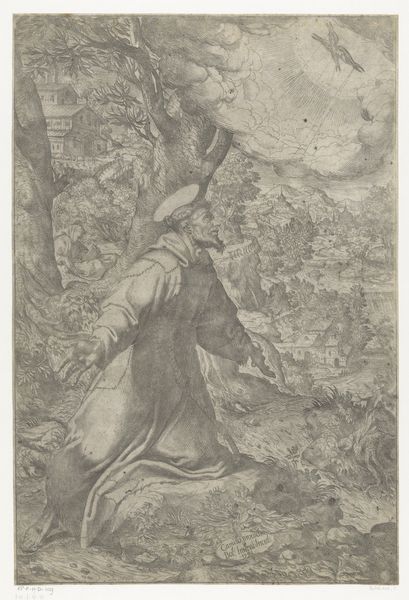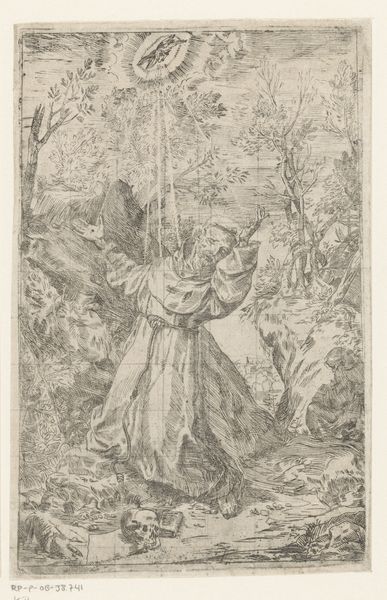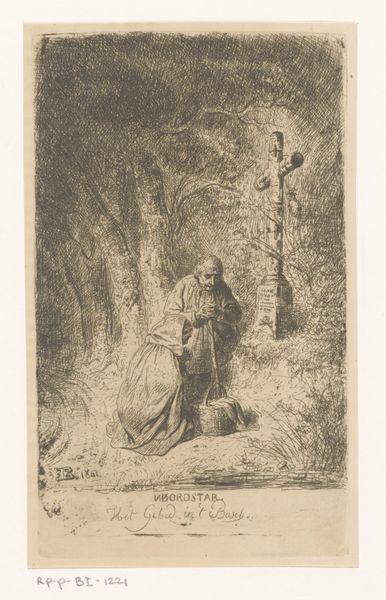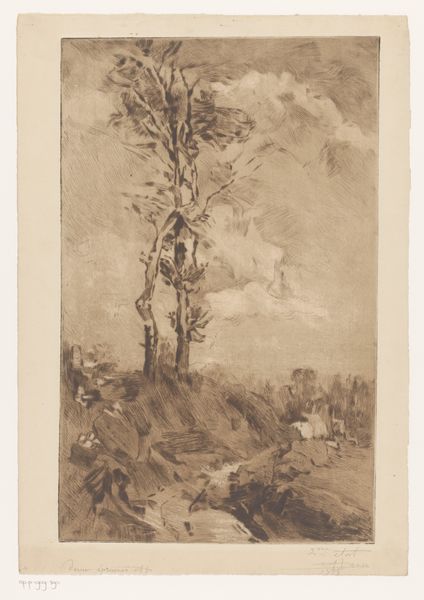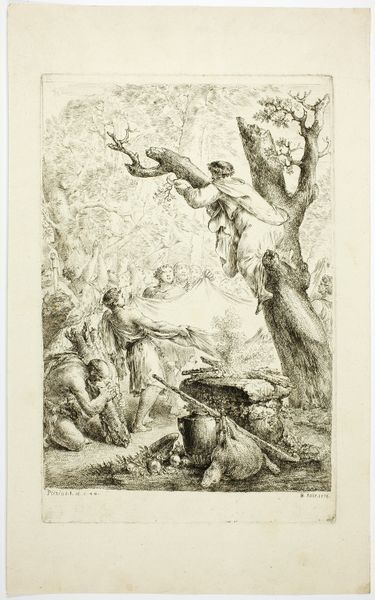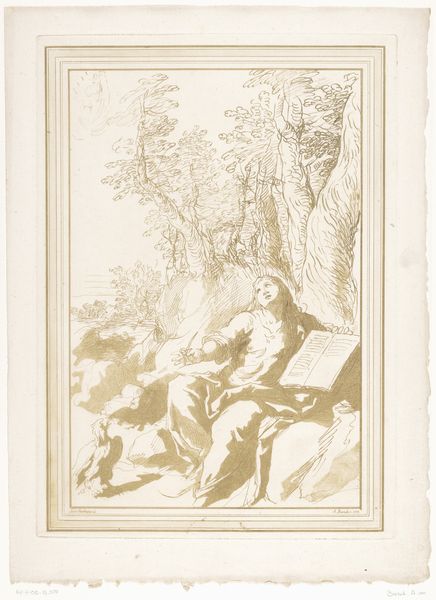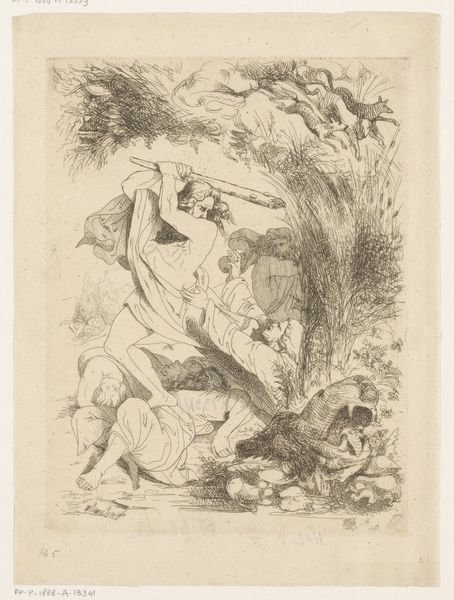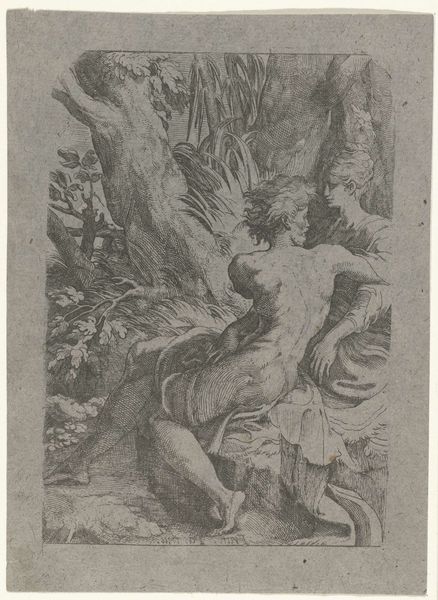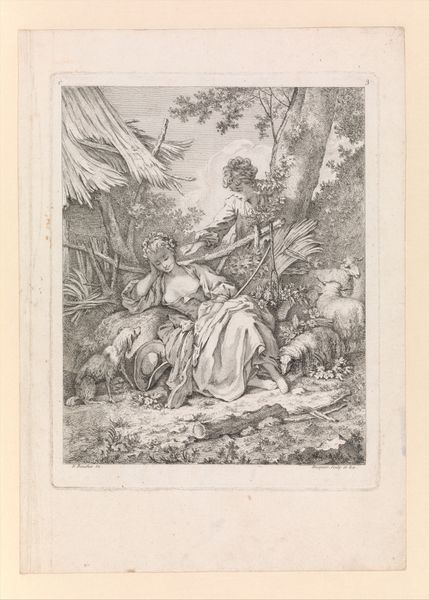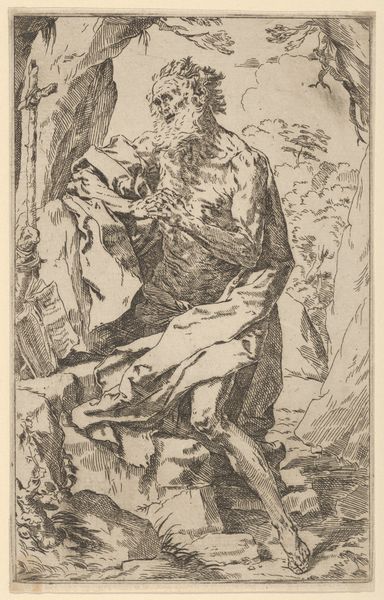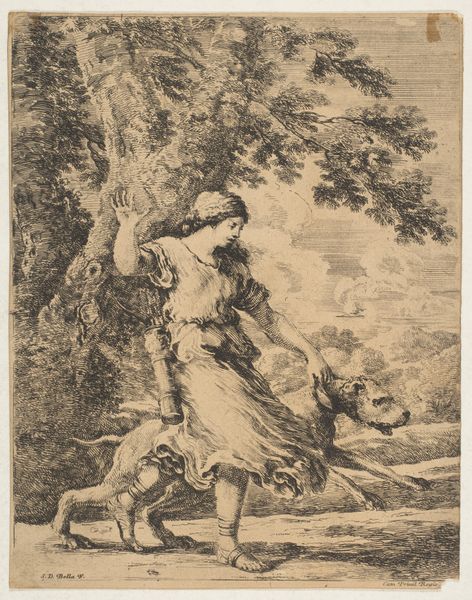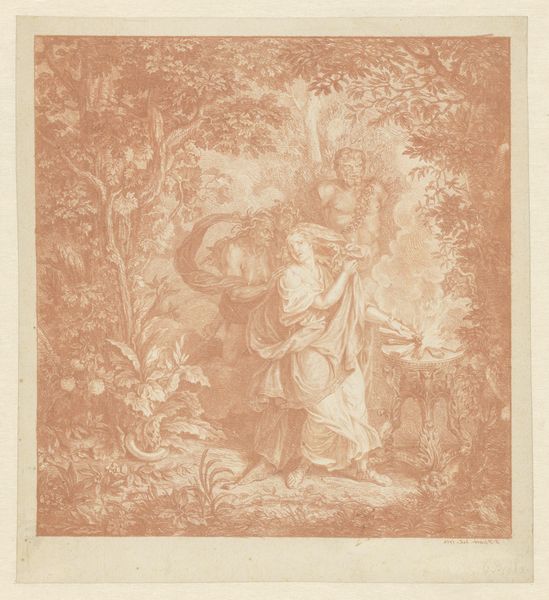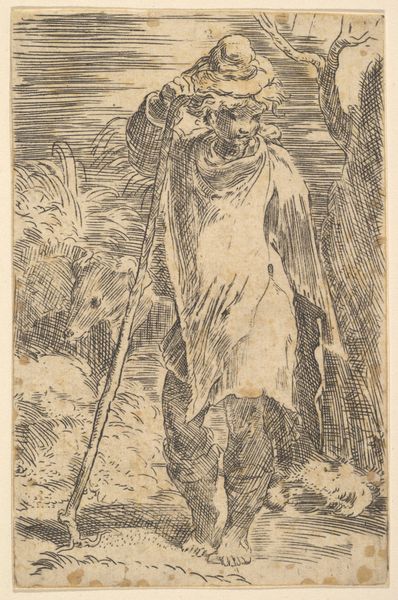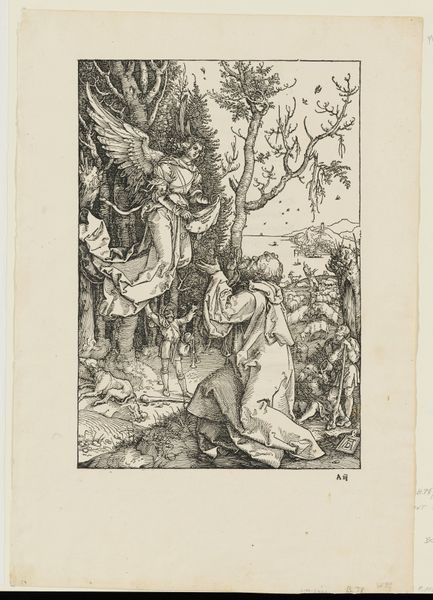
Saint Francis of Assisi Receiving the Stigmata 1593
0:00
0:00
drawing, print, etching
#
drawing
#
narrative-art
# print
#
etching
#
history-painting
Dimensions: 20 7/16 x 13 7/16 in. (51.91 x 34.13 cm) (sheet)23 3/4 x 17 1/8 in. (60.33 x 43.5 cm) (mount)
Copyright: Public Domain
Editor: We're looking at "Saint Francis of Assisi Receiving the Stigmata," an etching by Camillo Procaccini from 1593, held at the Minneapolis Institute of Art. The fine lines of the etching create a very intense, almost theatrical depiction of this miracle. What strikes you about this image? Curator: What interests me immediately is how Procaccini positions Saint Francis within the social landscape of the late 16th century. We see him kneeling, receiving the stigmata, not in isolation, but against a backdrop suggestive of societal structures – are those buildings? That tiny bird bearing the stigmata certainly is coming to earth into very particular surroundings, literally. Do you notice how small St Francis appears? Editor: I see what you mean! Compared to everything around him, he is rather small. Does this indicate something about the social standing of the church or the individual's power relative to institutions? Curator: Exactly! It’s fascinating how the visual language conveys power dynamics. Etchings like this served not only as devotional images, but as visual propaganda, subtly reinforcing the Church’s role. Notice the medium, a print. This would have facilitated wide distribution, influencing public perception across geographical boundaries. Who had access to the technology to disseminate images like this? Who was being influenced? Editor: So it's less about personal devotion and more about public messaging and solidifying power structures through the circulation of images? Curator: Precisely. We should always consider the artwork within its socio-political context. Even religious art serves a public function, shaping collective belief and affirming institutional authority. It is, perhaps paradoxically, a manufactured vision of a deeply personal experience. Editor: I hadn’t considered that the seemingly personal experience could have such a wide societal purpose. Curator: Thinking about these pieces through the lens of social history really changes how we see them, doesn’t it?
Comments
minneapolisinstituteofart almost 2 years ago
⋮
Francis is one of the most prominent saints of the Catholic Church. He lived 800 years ago and founded orders of monks, nuns, laypersons, and a separate one devoted to the protection of holy sites. Born to a rich family, he renounced wealth for a life of poverty and fasted in the wilderness for extended periods. Procaccini shows us the most famous moment of Francis’s life, as related by Brother Leo, whom we see reading just beyond the trees. After 40 days of fasting and prayer on a mountaintop, "Suddenly [Francis] saw a vision of a seraph, a six-winged angel on a cross. This angel gave him the gift of the five wounds of Christ" in the form of nail holes in his hands and feet, and a gash in his side. Procaccini’s dense network of nervous lines perfectly captures the emotional intensity of the mystical event.
Join the conversation
Join millions of artists and users on Artera today and experience the ultimate creative platform.
